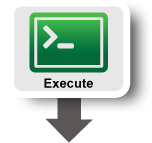
- Part I: Design/Setup
- Step 1: Design Experiment
- Step 2: Establish Management Environment
- Step 3: Obtain Resources

- Part II: Execute
- Step 4: Configure and Initialize Services
- Step 5: Execute Experiment
- Step 6: Analyze and Visualize Experiment

- Part III: Finish
- Step 7: Teardown Experiment
- Step 8: Archive Experiment
 }}}
Use the Omni GENI client to reserve two VMs connected by a Layer 2 circuit.
Then arrange for automatic installation and execution of software on these nodes (performing basic traffic measurement tests), and manually log in to inspect the results.
== Procedure ==
{{{
#!html
}}}
Use the Omni GENI client to reserve two VMs connected by a Layer 2 circuit.
Then arrange for automatic installation and execution of software on these nodes (performing basic traffic measurement tests), and manually log in to inspect the results.
== Procedure ==
{{{
#!html